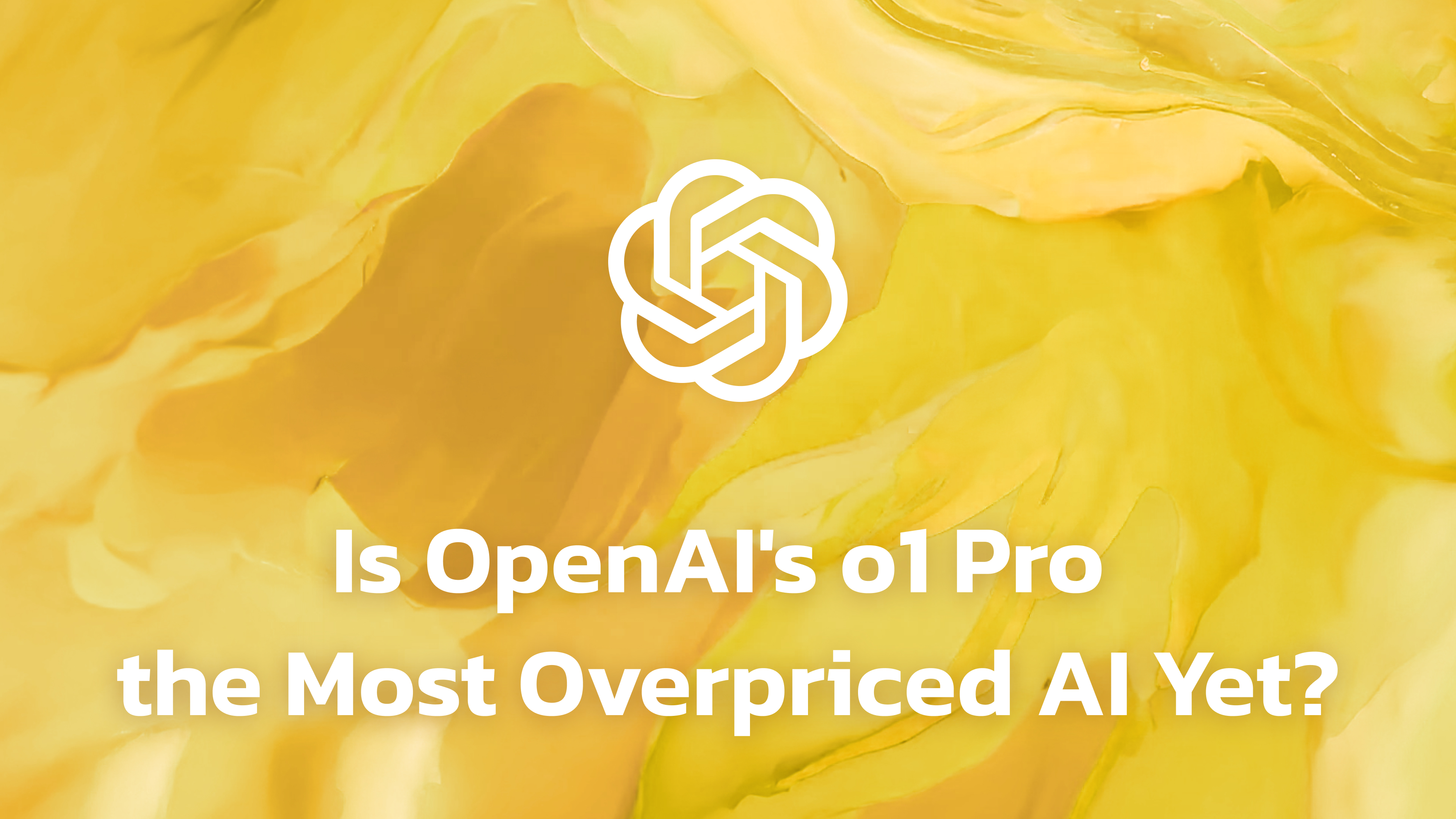Move over, GPT-4.5, there’s a new overpriced AI model in town. OpenAI has just launched o1 Pro, its latest AI reasoning model, and it comes with a price tag so absurd it makes previous models look like dollar-store knockoffs. How expensive? Try $150 per million input tokens and $600 per million output tokens—a full ten times the price of the standard o1 model and twice as expensive as GPT-4.5. For more details see complete pricing.
But don’t expect OpenAI to apologize for the sticker shock. According to them, o1 Pro “thinks harder” and provides “consistently better” responses, particularly for complex reasoning tasks. The company claims it burns through significantly more computational power to deliver superior performance—though early benchmarks suggest the improvements are incremental at best. So, is this just another way for OpenAI to squeeze more cash out of developers, or is o1 Pro truly a game-changer?
TL;DR
- OpenAI’s o1 Pro model costs $150 per million input tokens and $600 per million output tokens.
- That’s 10x more expensive than the regular o1 model and 2x the cost of GPT-4.5.
- Supports 200,000 context tokens, function calling, and structured outputs.
- No streaming support, only available via OpenAI’s Responses API.
- Performance gains are minor, making the price hard to justify.
So, would you pay top dollar for slightly better reasoning? Or is OpenAI just seeing how far they can push pricing before people say enough?
A Model That Costs More Than Your Rent
OpenAI is marketing o1 Pro as an elite-tier model designed for developers who need highly reliable, structured outputswith advanced reasoning capabilities. But at a staggering $600 per million output tokens, you’d better hope this AI is writing your code, solving your math problems, and maybe even paying your bills.
To put that into perspective, if you generate a single ChatGPT response with 1,500 words, that could easily run you around $1 per query. Now imagine deploying this at scale. Forget LLM-powered startups—this model might bankrupt entire companies before they even launch.
For comparison:
- GPT-4.5: Costs $75 per million input tokens and $300 per million output tokens.
- o1: Costs just $15 per million input tokens and $60 per million output tokens.
- DeepSeek-R1: A competing model that is 270x cheaper than o1 Pro.
OpenAI is betting that developers will pay a premium for slightly more reliable responses. The question is—will they?
Who Can Even Use o1 Pro?
Right now, o1 Pro is not for everyone. OpenAI has limited access to developers who have spent at least $5 on their API services. This isn’t exactly an exclusive club, but it does mean that OpenAI is targeting serious API users—particularly those building AI agents and automation tools.
However, if you’re used to ChatGPT’s Chat Completions API, forget it. o1 Pro is only available through OpenAI’s new Responses API, meaning devs will need to rewrite parts of their applications to use it. That’s a major pain point for those who have built their apps around OpenAI’s previous API structure.
Oh, and there’s no streaming support. If you wanted fast, real-time responses, tough luck.
Does It Even Perform That Much Better?
Early tests are mixed. OpenAI claims that o1 Pro provides more reliable answers, especially in complex reasoning tasks like coding and mathematical problem-solving. You can read full review here. But let’s not pretend it’s leaps and bounds better.
Here’s what we know so far:
- It still struggles with logical puzzles like Sudoku.
- It gets tripped up by simple optical illusions.
- Benchmarks show only a slight improvement over the standard o1 model.
One developer, Simon Willison, tested it by generating an SVG of a pelican riding a bicycle. The AI failed spectacularly—placing the pedals in the wrong spot and struggling to get the beak right. Even after cranking up the model’s reasoning effort, the results were only marginally better.
So yes, it’s a more expensive model. Yes, it thinks harder. But does it actually justify its price? Not according to early users.
Is o1 Pro Worth the Money?
If you need absolute reliability, structured outputs, and high-end function calling, then maybe. But let’s be real—o1 Pro is priced for enterprise use, not hobbyists or small-scale developers. For most people, the standard o1 model or even GPT-4.5 will be more than sufficient.
With competition heating up and alternative models offering similar performance at a fraction of the cost, OpenAI may be pushing its luck with this pricing strategy. But hey, if you’re feeling adventurous (and have deep pockets), o1 Pro is now available—just don’t expect it to revolutionize AI overnight.
Is OpenAI’s Pricing Sustainable?
The release of o1 Pro raises serious questions about the future of AI models. While OpenAI is doubling down on premium pricing, competitors like Anthropic, Google DeepMind, and Mistral are rolling out more affordable, high-performance models that appeal to a broader audience. If history tells us anything, the market won’t tolerate overpriced AI forever.
OpenAI’s strategy seems to be targeting big-budget enterprises rather than democratizing AI. But will that work in the long run? With startups and research labs looking for cost-effective alternatives, it’s only a matter of time before another company undercuts OpenAI with a cheaper, equally capable model.
One thing is certain: the AI arms race is far from over, and with each new model release, the industry edges closer to a point where cutting-edge performance doesn’t have to come with an astronomical price tag. Until then, developers will have to decide if OpenAI’s latest offering is worth the price—or if it’s just another expensive experiment.







